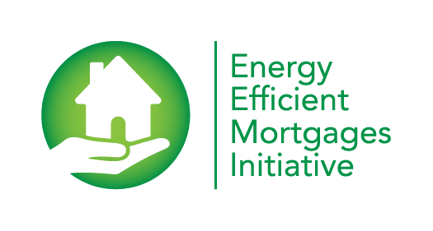Green mortgages, also known as ecological mortgages, are increasingly present in the landscape of finance and sustainable building. These financial tools not only promote the acquisition of environmentally friendly homes, but also offer borrowers a series of economic benefits that should not be overlooked.
What is a green mortgage?
Green mortgages, also known as eco-mortgages, are specifically designed to finance the purchase, construction or renovation of sustainable housing, thereby promoting environmental protection and reducing environmental impact. The ultimate goal of this type of financing is to contribute to the decarbonisation of the real estate stock, i.e. to reduce CO2 emissions from its construction and operation.
This type of loan offers financial advantages depending on the bank that grants them. Some of the most common economic benefits are:
- Interest 0.05 or 0.10 points lower
- The opening fee is not charged
- Fewer associated insurances are included
Although green mortgages are not yet very common in Spain, currently nine banks, including well-known financial institutions such as BBVA, Santander and Bankinter, are already offering such loans. This demonstrates a growing commitment on the part of financial entities to promote sustainability and support the transition towards more eco-friendly housing.
It is important to know that not all homes can access a green mortgage. As their name suggests, they are designed to promote sustainable building, so only those properties that are both low in carbon emissions and energetically efficient will be eligible for this type of financing and its consequent benefits. The most frequent requirements to apply for a green mortgage are:
- That the energy rating of the house is level A. Some banks, like BBVA, are satisfied with B.
- If the mortgage is requested to rehabilitate a property, it must reach efficiency level A.
By investing in a home with a high energy rating, homeowners can enjoy more efficient energy use, which translates into savings on utility bills.
Taxonomy EU in green mortgages
The European Taxonomy plays a key role in the context of green mortgages. This regulation provides a clear classification and definition of economic activities that contribute to the objectives of sustainability and the fight against climate change. In the case of green mortgages, the EU Taxonomy helps to identify and assess whether a house meets the sustainability criteria for green mortgages.
By relying on clear standards and criteria, the EU Taxonomy provides transparency and confidence to both borrowers and lenders. It allows banks to objectively assess whether a home meets the necessary sustainability requirements to qualify for a green mortgage. Likewise, it provides borrowers with the assurance that they are investing in a home that meets the highest standards of sustainability and energy efficiency.
The inclusion of the EU Taxonomy on green mortgages also contributes to the harmonisation and standardisation of this type of financing at European level. By establishing common criteria, the comparison and evaluation of sustainable housing in different countries is facilitated. This fosters cooperation among EU member states and promotes the adoption of more sustainable practices in the real estate sector in general.
The EEMI (Energy Efficient Mortgages Initiative)
 At the European level, the main reference for green mortgages is the Energy Efficient Mortgages Initiative (EEMI). This initiative, developed in 2015, aims to define and promote energy efficiency mortgages (EEMs) in Europe.
At the European level, the main reference for green mortgages is the Energy Efficient Mortgages Initiative (EEMI). This initiative, developed in 2015, aims to define and promote energy efficiency mortgages (EEMs) in Europe.
Through the creation of a solid framework, the EEMI seeks to benefit all parties involved in the housing sector, while contributing to the improvement of the environment.
The EEMI aligns with European legislation and policies, acting as a nexus for EU policy initiatives in the areas of sustainable finance, energy policies, and climate policies. It seeks to mobilise the EU mortgage industry and unlock the region's energy-saving potential, with a view to achieving climate neutrality by 2050, a central objective of the European Green Pact.
One of the components of the EEMI is the EEM Label, which identifies those buildings that are considered energy efficient, providing a mechanism for banks to align themselves with the requirements of the European Taxonomy over time and thereby boosting their Green Asset Ratio. This helps to increase the number of sustainable real estate assets in their portfolios. Ultimately, this contributes to the fulfilment of the ESG criteria of real estate asset management companies.
The initiative also pays attention to the close relationship between climate risk and financial stability. It should be recalled that the CRREM tool focuses on this financial relationship.
In 2018, an action plan was published to advance the EEMI Initiative, called EeMAP (Energy Efficient Mortgages Action Plan), a project in which the European network of GBCs participates as a partner. The main objective of this initiative is to establish a standardized "energy efficiency mortgage" at the European level. Under this scheme, building owners receive financial incentives to improve the energy efficiency of their properties or to acquire homes that already meet high energy efficiency standards.
In conclusion, green mortgages represent an innovative and attractive option in the field of sustainable building and finance. The EEMI Initiative and other European efforts establish a framework for the development and promotion of energy efficiency mortgages, offering benefits for both borrowers and the environment.


